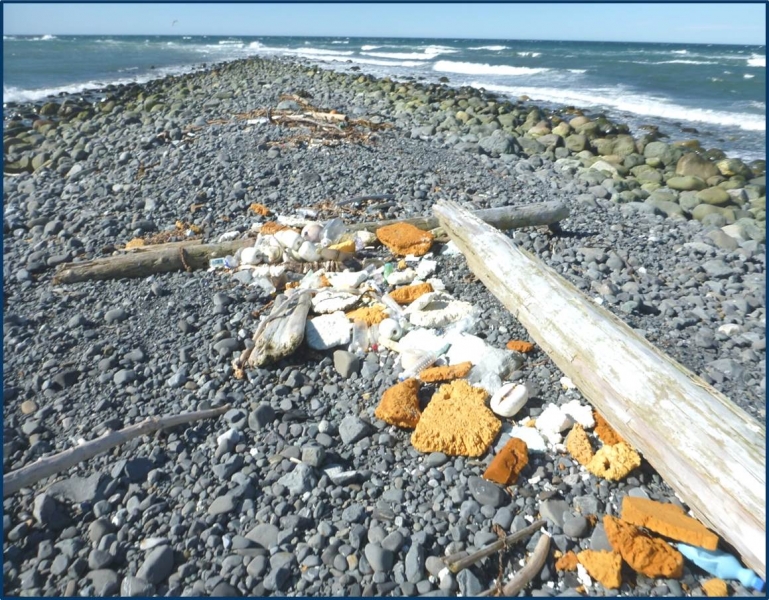By: Carlie Herring, Research Analyst for the NOAA Marine Debris Program
After the 2011 tsunami in Japan, the Alaskan coastline experienced a rise in debris washing ashore. Although there was an increase in many types of debris, the abundance of expanded polystyrene (think foamed plastic) increased on some beaches by as much as 1,600% from 2008 to 2012. This spurred interest by NOAA scientists at the Auke Bay Laboratory in Juneau, Alaska, to explore the interaction between this foam debris and an important Alaskan fishery species: pink salmon (Oncorhynchus gorbuscha). The researchers were interested in both determining the potential of juvenile pink salmon to ingest small foam pieces and understanding the physiological consequences of ingesting foam debris (such as, would ingesting foam alter their growth rates?). Through support from the NOAA Marine Debris Program, the team began an experimental study to address these questions.

To measure the amount of polystyrene foam ingested and to test the impact of ingestion on growth, researchers mixed polystyrene foam pieces with food and fed the mixture to juvenile pink salmon for five weeks. The researchers developed a methodology to accurately measure the amount of polystyrene foam in the gut contents of the fish. Weekly measurements of the length and weight of fish were taken and after five weeks, this new methodology was used to record their stomach contents. In addition, nucleic acid (RNA/DNA) ratios within the fish were evaluated to examine fish growth rate at a cellular level.
Although the nucleic acid ratios showed differences between foam-fed fish and those that did not ingest foam, there was no difference in growth (fish weight and length) between the two groups. The researchers postulated that the difference could be from the body’s response to the introduction of toxic chemicals from the ingested foam. Overall, the experiment showed that polystyrene can be consumed by juvenile pink salmon when it is present in the ecosystem.
The scientists noted that this was a short-term study and suggested longer exposure studies in the future to more definitively test the effects of polystyrene ingestion on the growth of juvenile salmon. They also suggested that varied feeding levels may better reflect fish behaviors and feeding patterns in the natural environment.
For more on research projects supported by the NOAA Marine Debris Program, visit our website.
